
Last year’s crop of prospects playing in Omaha was historic, just like the top of the 2023 MLB draft, in part because the overlap was complete. The Men’s College World Series had 10 of the first 15 college players drafted last season, all in the first round. It also featured seven more players projected to go in the first round this year.
While this year’s crop isn’t quite as star-studded, it isn’t far behind in overall talent with eight to 10 projected first rounders and at least two more expected for next year’s draft (which will likely become four or five players in the end).
Below I rank all 34 of the players on this year’s MCWS teams that I expect to go in the first three rounds when they are draft-eligible, regardless of class, and then identify the best prospect and potential top-five-round picks from each school. Remember this ranking is purely on pro potential and draft stock, not potential College World Series impact, and prospects are 2024 draft eligible unless noted otherwise.
Here are the top MLB draft prospects — and potential major league stars of tomorrow — in Omaha.
Watch: MCWS, starting Friday on ESPN | Storylines, predictions | Schedule
Top MLB draft prospects in MCWS
1. Jac Caglianone, 1B, Florida
2. Braden Montgomery, RF, Texas A&M (injured)
3. James Tibbs III, RF, Florida State
4. Ryan Waldschmidt, LF, Kentucky
5. Cameron Smith, 3B, Florida State
6. Christian Moore, 2B, Tennessee
7. Jace Laviolette, CF, Texas A&M (2025)
8. Jamie Arnold, LHP, Florida State (2025)
9. Vance Honeycutt, CF, North Carolina
10. Billy Amick, 3B, Tennessee
11. Griff O’Ferrall, SS, Virginia
12. Liam Peterson, RHP, Florida (2026)
13. Drew Beam, RHP, Tennessee
14. Ryan Prager, LHP, Texas A&M
15. Jacob Cozart, C, North Carolina State
16. Kavares Tears, CF, Tennessee
17. Blake Burke, 1B, Tennessee
18. Dean Curley, 2B, Tennessee (2025)
19. Luke Stevenson, C, North Carolina (2025)
20. Gavin Grahovac, 3B, Texas A&M (2026)
21. Cam Leiter, RHP, Florida State (2025)
22. Justin Lamkin, LHP, Texas A&M (2025)
23. Dylan Dreiling, LF, Tennessee
24. Cade Kurland, SS, Florida (2025)
25. Henry Ford, 1B, Virginia (2025)
26. Casey Saucke, RF, Virginia
27. Henry Godbout, SS, Virginia (2025)
28. Ethan Anderson, C, Virginia
29. Colby Shelton, SS, Florida
30. AJ Russell, RHP, Tennessee (2025)
31. Harrison Didawick, LF, Virginia
32. Chris Cortez, RHP, Texas A&M
33. Emilien Pitre, 2B, Kentucky
34. Shane Sdao, LHP, Texas A&M (2025)
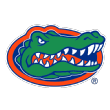
Florida Gators
Top Prospect: Jac Caglianone, 1B
The Gators have been inconsistent this year, leading to starting the postseason as a 3-seed in the Stillwater regional, but they’ve gotten hot at the right time, thanks to the usual complement of pro-level talent. I did a deep dive on Caglianone and other top hitters in the draft last week. Here’s a summary: He chases bad pitches at a very high rate but is so physically talented that some scouts aren’t that worried about it.
Liam Peterson was one of the better prep pitchers in last year’s draft before deciding to go to Florida, and he acquitted himself well as a freshman, so he’s tracking like a potential first-round pick. Colby Shelton fits better at second or third base in pro ball and has pretty average tools, but that’s the scouting report of some low-end MLB regulars. Cade Kurland is a better defender with more pop, but has some swing and miss concerns. Righties Brandon Neely and Fisher Jameson fit in the fifth-to-seventh-round area in this year’s draft with some traits that clubs with a specific pitching development point of view, like the Guardians, may target. For next year’s draft — beyond Kurland if he comes back — lefty Cade Fisher, righty Jake Clemente, and catcher Brody Donay all have top-five-round upside and 2026-eligible righty Luke McNeillie is a silky smooth projection righty who could be an early-round pick with an extra couple ticks of velo.
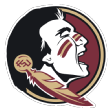
Florida State Seminoles
Top Prospect: James Tibbs III, RF
The Noles used to find postseason success by targeting recruits who weren’t getting pro attention. Those prospects would only occasionally turn into early-round draft picks on campus, but were good college players. That philosophy has changed in the last five to ten years. Florida State is now loaded with pro prospects.
Tibbs was one of the better pure hitters to get to campus three years ago and has performed like it (.342 career average, 55 homers) since arriving. He has taken a big step forward this season and is now being pegged as the most polished hitter in the draft, with real top-10 buzz.
Cameron Smith is just behind him, likely being selected by the No. 20 picks next month, with even more upside thanks to his above-average speed, plus arm and plus-plus power. There are some questions about Smith’s position and how he’ll fare against pro pitching. His swing was geared for power last year and produced a 29% strikeout rate, so he eliminated most of the pre-pitch movement and cut that rate in half while still posting huge exit velos. Some scouts worry that his swing now lacks rhythm, something that will become more essential as he gets closer to the big leagues, but he has All-Star upside if it clicks.
Marcos Dinges (minor sleeper alert) and Jaime Ferrer should also get some attention in the first 10 rounds of this summer’s draft while injured righty Gavin Adams was up to 100 mph in the preseason.
Florida State could well be back in Omaha next year due to having the best one-two rotation punch in the 2025 draft class in lefties Jaime Arnold and righty Cam Leiter (cousin of Rangers prospect Jack Leiter). Arnold has the rare low-launch release point matched with velo, command and a deep repertoire while Leiter is a conventional power righty with below-average command right now. Infielder Drew Faurot and outfielder Max Williams both also fit in the top five rounds of next year’s draft.
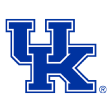
Kentucky Wildcats
Top Prospect: Ryan Waldschmidt, LF
Kentucky isn’t as deep with top-five-rounds type prospects as some of the other teams in Omaha, but the Wildcats still have a lot of good draftable players.
Waldschmidt is the big name. He was unknown to scouts entering his freshman year at Charleston Southern but put up big numbers, leading to a transfer to Lexington. He moved into the first-five-rounds conversation last season before tearing his ACL on the Cape during the summer. Upon returning, his draft range rose to the second round by midseason and is now up to the middle of the first round. He is a solid-average runner and a solid left fielder with a combination of bat control, pitch selection and in-game power that rivals Travis Bazzana for the best in the draft class. His momentum is building, and he’s the best candidate to make millions with a strong showing in Omaha, like Cade Horton in 2022 and Will Bednar in 2021.
Emilien Pitre is a third or fourth rounder with a standout hit/approach combo and enough power to let those play, in a utility-type profile. Righty Travis Smith fits in the fifth-to-seventh round as a power righty with above-average stuff in a reliever profile.
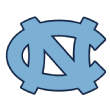
North Carolina Tar Heels
Top Prospect: Vance Honeycutt, CF
Honeycutt’s position on this list or my overall draft rankings can be a bit polarizing with fans. He was heralded as a potential No. 1 overall pick after an outstanding freshman year (.296 average, 1.079 OPS, 25 homers, 29 stolen bases, excellent defense in center field). He still has those tools and upside but has had some injuries, various adjustments in offensive approach, swing tweaks and a persistently high strikeout rate.
Some teams that are considering drafting him think he’s a 3 bat (i.e. 30 on the 20-80 scale, or a .220ish average hitter when in the big leagues) and are still interested due to all the other stuff he can do. Some other teams aren’t considering him in the middle of the first round and have even lower offensive expectations, tied to his in-zone miss rate (21% this year) and swing path. He could realistically go anywhere from picks 12 to 35 and have any sort of pro career from bust to making an MLB All-Star team, so he’ll be among the most intriguing prospects to follow in pro ball.
The Tar Heels are deep in potential top-five-round candidates, but probably don’t have another first-round talent on the roster. Casey Cook could go as high as the third round this summer, but is more of a performer than a tools stand out. Dalton Pence and Folger Boaz are 2025-eligible lefties while 2026-eligible righties Jason Decaro and Olin Johnson could have even more upside. 2026-eligible infielder Gavin Gallaher is probably the best of this underclassman bunch.

North Carolina State Wolfpack
Top Prospect: Jacob Cozart, C
The Wolfpack aren’t one of the schools you hear about dominating the transfer portal or as a big player in NIL, but they steadily do a great job of getting talent on campus and developing it. Cozart looks like a second rounder who could sneak into the comp round in a deep group of college catchers. He’s surprisingly good defensively given his 6-foot-3 frame and offers enough offensively to look like a potential big league starter if things break right.
Eli Serrano has long been considered an advanced hitter with some pop, but he hasn’t fully tapped into his power yet, a near-essential tool for a first baseman. He could be a target for MLB clubs that have a track record of teasing that power out of hitters who are good at everything else — the Los Angeles Dodgers come to mind.
Shane Van Dam is a 2025-eligible righty who sits 92-95 mph and may move to the rotation next season. Derrick Smith is a later-blooming 2025-eligible righty who sits 92-94 mph and has performed well this year: 28 IP, 9 BB, 41 K. The 2026-eligible freshmen are headlined by righty Jacob Dudan (95-97 mph fastball) and catcher Alex Sosa (lefty-hitting power-and-patience type).

Tennessee Volunteers
Top Prospect: Christian Moore, 2B
The Volunteers are loaded with pro talent all over the field. Moore looks like a mid-first rounder now that he’s simplified his approach at the plate and his exit velos are now easily plus-plus. Billy Amick also has plus-plus exit velos, feel for the bat head, and plays the infield, but has a little more chase than Moore. Blake Burke is limited to first base, also has plus-plus exit velos but has chase issues and his launch angle is a bit too flat for his big raw power. Kavares Tears is a traditional center fielder but, wait for it, also has plus-plus exit velos with enough feel for the bat to profile as a potential everyday player in pro ball.
Dean Curley is a 2025-eligible freshman playing shortstop that has merely plus exit velos, but is above average at everything in the batter’s box, so he could become a first round pick by this time next season. Dylan Dreiling is also in that plus exit velos box and is limited to left field, so he’s right on the borderline of potential pro platoon player or low-end regular. 2025-eligible catcher Cannon Peebles is also a potential top five rounder that scouts think will bounce back next season. So basically the whole lineup will play pro ball.
The pitching staff is pulling its weight, too. Drew Beam looks like he’ll go in the top 50 picks this summer despite an up-and-down spring. The elements are here for a savvy pitching development org to dial him in. A.J. Causey is another medium stuff pitcher with good command that could thrive in the right pro environment, but likely lands closer to the sixth round than the second. 2025 eligible AJ Russell has flashed plus stuff this year but also has been inconsistent; the way he looked in the opening weeks of the season is a first rounder. 2025-eligible righty Nate Snead has been in the triple digits, sitting 95-98 mph while fellow 2025-eligible righty Marcus Phillips sits 93-96 mph with sink and 2025-eligible lefty Matthew Dallas also shows promise.
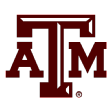
Texas A&M Aggies
Top Prospect: Braden Montgomery, RF (injured)
Montgomery is unfortunately out for the season with a nasty leg injury suffered during super regionals. He was featured among my top hitters in the draft before getting hurt: The short version is he’s a potential power-over-hit All-Star caliber right fielder who also has a top-of-the-scale 80-grade arm. Shortstop Ali Camarillo and catcher Jackson Appel will also draw some interest in the draft this summer, but the most exciting prospect from Texas A&M who will take the field in Omaha is eligible for next year’s draft.
Jace LaViolette — the top prospect right now for the whole 2025 MLB Draft — reminds me of Lance Berkman, a Texas-born outfielder who might be a pro center fielder but is a big dude with power that profiles well in a corner, too. 2026-eligible infielder Gavin Grahovac had some negative buzz from scouts last spring that helped push him to campus, where he’s been excellent this season. Now he’s tracking like a top-two-rounds pick. Quietly, 2026-eligible outfielder Caden Sorrell was almost as good as Grahovac this spring and is also looking like an early-round pick.
On the mound, the Aggies rely on lefty Ryan Prager, who may sneak into the comp round due to his advanced command and deception of solid-average stuff. Cortez is the other sort of pitcher, sitting 96-99 mph with a hellacious sinker reminiscent of the reliever version of Jordan Hicks; he feels like a third rounder and may also get stretched out in pro ball. For the 2025 draft, lefties Justin Lamkin, Shane Sdao (both potential top-two-rounds starter types), and Kaiden Wilson (power reliever type) all show top five round upside as does righty Weston Moss. In the 2026-class, keep an eye on righty Isaac Morton, who sits 93-97 mph with heavy sink.
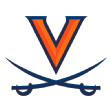
Virginia Cavaliers
Top Prospect: Griff O’Ferrall, SS
O’Ferrall is the headliner here, a throwback shortstop with above-average speed, arm strength and defense who is more of a pure hitter, with elite bat control, than a power threat. While he may not look to be a potential above-average everyday big league shortstop during batting practice, the advanced metrics suggest he has that kind of upside, and there is interest from teams with picks in the 20s next month to back that up.
Virginia has a deep group of top-five-rounds caliber position players, but the rest are missing an element to get scouts as excited as they are about O’Ferrall. Harrison Didawick, Casey Saucke and Ethan Anderson are eligible for this summer’s draft and probably fit in the third or fourth round. Didawick is a left fielder with power and patience but has in-zone miss that limits his upside. Saucke is a former third baseman now playing right field and has an intriguing bat control/in-game power combo, but chases more than average and needs to add more lift. Anderson is probably a catcher in pro ball but doesn’t do it much in college and, like some Virginia hitters of the past, he isn’t getting to his raw power in games like he could.
For the 2025 draft offensively, Henry Ford (well-rounded hitter with limited defensive value) and Henry Godbout (middle infielder who hits, with limited power) are in this bucket and an infielder for 2026, Eric Becker (real power with some swing and miss) probably is, too.
On the mound for this draft, righty Jay Woolfolk is an intriguing dual-sport standout (he gave up playing football as a quarterback to focus on baseball) with some untapped upside. Righty Jack O’Connor (sits 92-95 mph and throws a lot of strikes) and lefty Evan Blanco (most reliable starter this year, sits 88-90 mph) are the 2025-eligible arms of note.




















